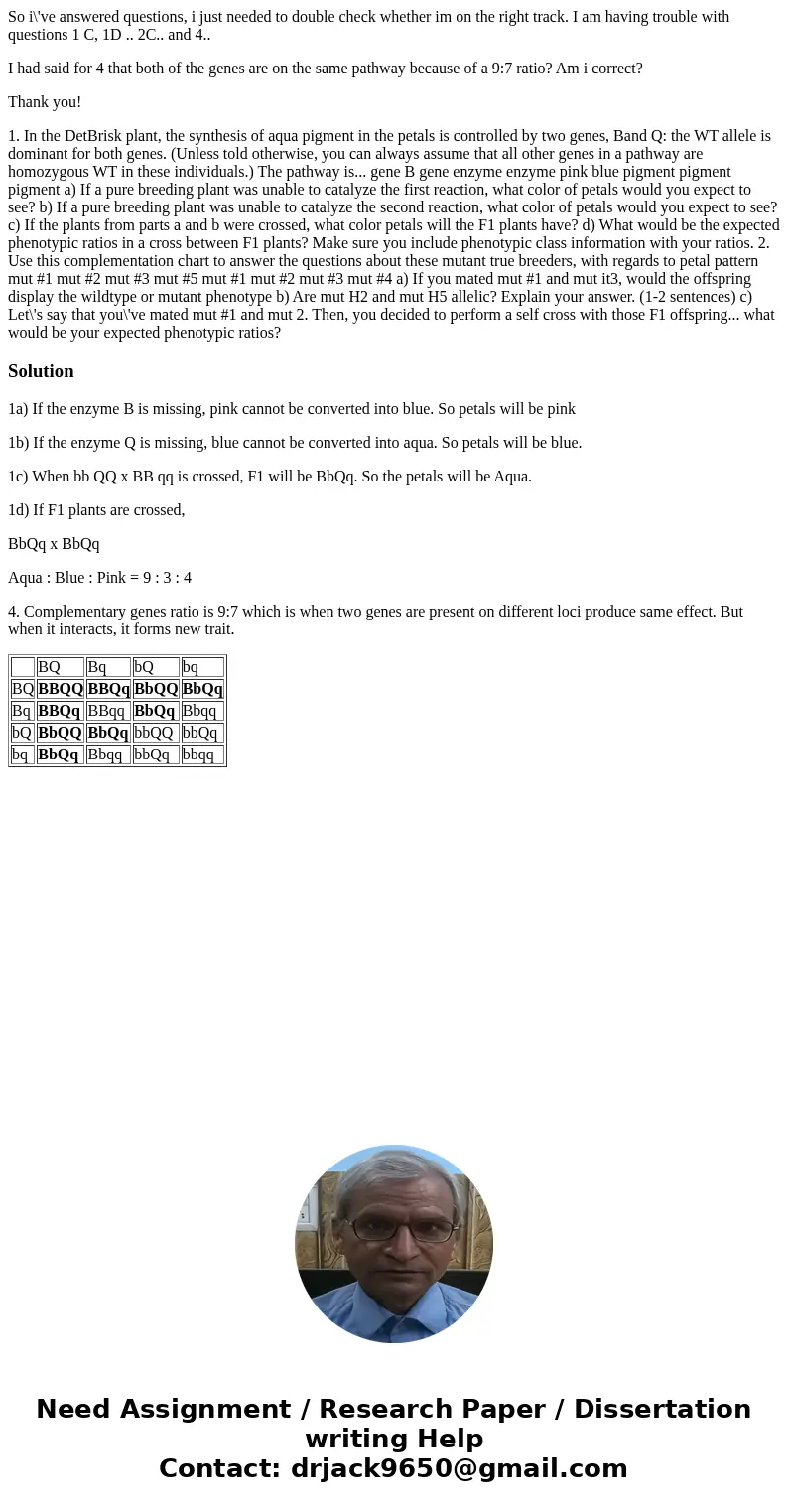So ive answered questions i just needed to double check whet
So i\'ve answered questions, i just needed to double check whether im on the right track. I am having trouble with questions 1 C, 1D .. 2C.. and 4..
I had said for 4 that both of the genes are on the same pathway because of a 9:7 ratio? Am i correct?
Thank you!
1. In the DetBrisk plant, the synthesis of aqua pigment in the petals is controlled by two genes, Band Q: the WT allele is dominant for both genes. (Unless told otherwise, you can always assume that all other genes in a pathway are homozygous WT in these individuals.) The pathway is... gene B gene enzyme enzyme pink blue pigment pigment pigment a) If a pure breeding plant was unable to catalyze the first reaction, what color of petals would you expect to see? b) If a pure breeding plant was unable to catalyze the second reaction, what color of petals would you expect to see? c) If the plants from parts a and b were crossed, what color petals will the F1 plants have? d) What would be the expected phenotypic ratios in a cross between F1 plants? Make sure you include phenotypic class information with your ratios. 2. Use this complementation chart to answer the questions about these mutant true breeders, with regards to petal pattern mut #1 mut #2 mut #3 mut #5 mut #1 mut #2 mut #3 mut #4 a) If you mated mut #1 and mut it3, would the offspring display the wildtype or mutant phenotype b) Are mut H2 and mut H5 allelic? Explain your answer. (1-2 sentences) c) Let\'s say that you\'ve mated mut #1 and mut 2. Then, you decided to perform a self cross with those F1 offspring... what would be your expected phenotypic ratios?Solution
1a) If the enzyme B is missing, pink cannot be converted into blue. So petals will be pink
1b) If the enzyme Q is missing, blue cannot be converted into aqua. So petals will be blue.
1c) When bb QQ x BB qq is crossed, F1 will be BbQq. So the petals will be Aqua.
1d) If F1 plants are crossed,
BbQq x BbQq
Aqua : Blue : Pink = 9 : 3 : 4
4. Complementary genes ratio is 9:7 which is when two genes are present on different loci produce same effect. But when it interacts, it forms new trait.
| BQ | Bq | bQ | bq | |
| BQ | BBQQ | BBQq | BbQQ | BbQq |
| Bq | BBQq | BBqq | BbQq | Bbqq |
| bQ | BbQQ | BbQq | bbQQ | bbQq |
| bq | BbQq | Bbqq | bbQq | bbqq |

 Homework Sourse
Homework Sourse